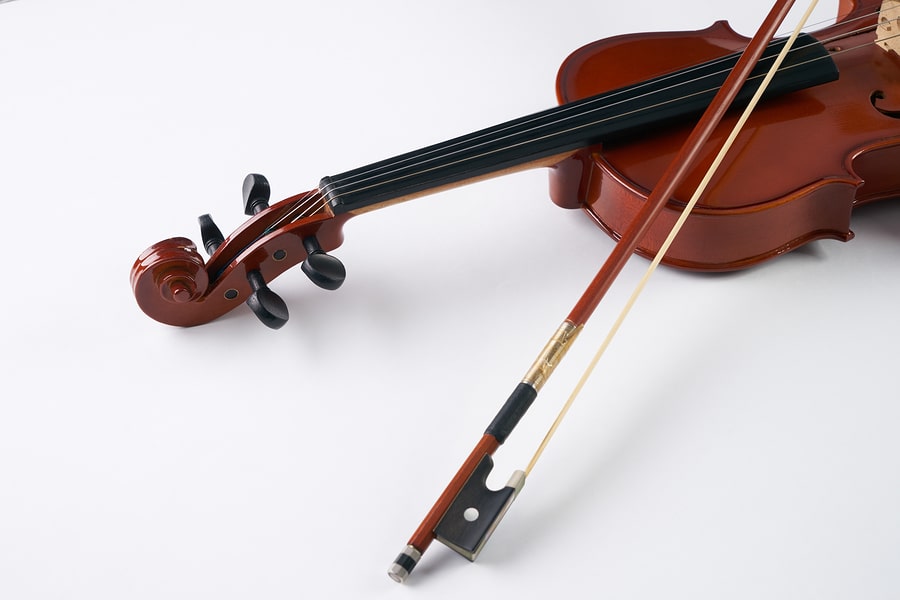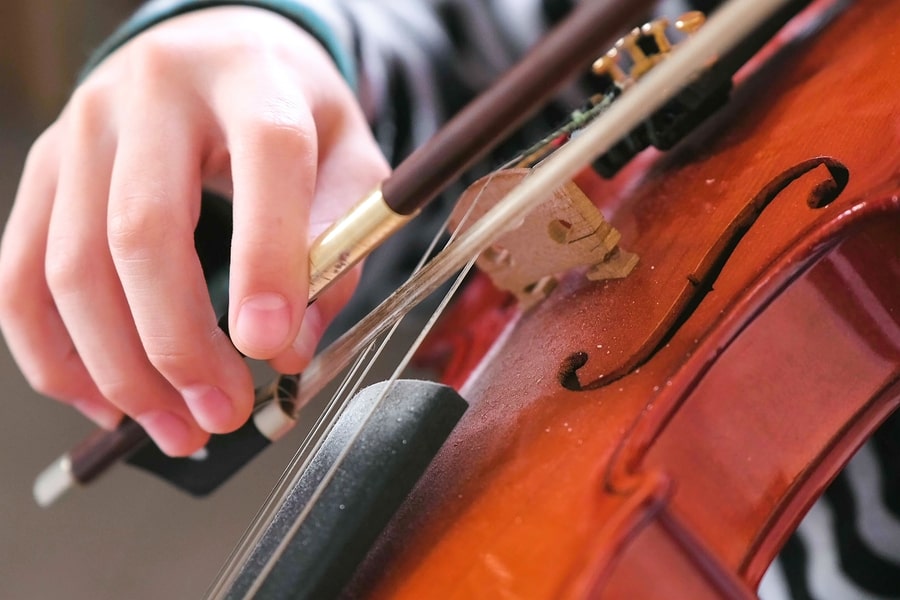Music School, Violin
How To Choose A Violin Bow
Choosing a violin bow can be difficult, especially when you don’t know what is suitable for you and what aspects to consider. With many different variations of bows at difference prices, someone who is unfamiliar with violin bows would simply think: what is the difference?
Read on to find out what to consider when going to buy a new violin bow.
Before going out to buy a violin bow, here are some basics on violin bows you should now.
Material
Common materials used to make violin bows are Brazilwood, Pernambuco and synthetic materials.
Violin bows are made out of the Pau Brazil tree wood. The tree provides two types of wood – heartwood and sap wood. Heartwood refers to the inner wood that is less dense and of a darker colour. The wood surrounding the heartwood is lighter and known as the sap wood.
When the wood is supplied to bow makers, they refer to sapwood as Brazilwood and heartwood as Pernambuco.
In summary, heartwood is Pernambuco and sapwood is– Brazilwood.
Brazilwood
Violin bows made out of Brazilwood are often more affordable. They usually are of a duller medium brown and do not afford the same stiffness and properties that Pernambuco does.
As such, Brazilwood-made bows are suitable for players who are beginners to early intermediate.
Pernambuco
Pernambuco bows are denser and have better strength for the same of weight of a Brazilwood bow. Usually, Pernambuco bows give a better sound and tonal quality. However, Pernambuco is now a scarce resource due to environmental degradation. As a result, due to the limited availability of Pernambuco, Pernambuco bows are more expensive.
Because of its higher price, we recommend Pernambuco bows for intermediate to advanced level players who can feel and hear the difference in quality.
Synthetic Materials
Some synthetic materials used to make violin bows are fiber glass and carbon fibers. Using synthetic materials allows consistency between bows of the same model which cannot be achieved by bows handcrafted out of wood.
The difference between carbon fiber and fiberglass bows is that fiberglass does not offer the same responsiveness as carbon fiber bows. However, both materials are suitable for making long lasting violin bows.
At a similar price point, one might choose to go for a bow made out of carbon fiber rather than a bow made out of Brazilwood.
Decorative Materials
Just like your violin, the bow also has decorative elements that give each a distinctive feel and personality. Often times, the frog, top and windings vary in the level of elegance and beauty. As such, you should take your time to inspect the bow closely, finding one that matches you and your violin.
However, it should be noted that these decorative materials are not without a downside. They impact the overall weight and balance as well as your comfort of play. To ensure functionality, we recommend avoiding overly heavy materials. In addition, you should check that they are not made of banned materials such as ivory or lizard skin.
Sound
Different bows create different sounds. The difference in sound is subtle and only noticeable to the trained ear.
A bow with a stick that is flexible and soft creates a sound that lacks clarity and definition. In contrast, bows which are stiffer and more solid can produce a brighter, more focused sound. However, if a bow is too stiff, a rough, edgy sound is produced.
Given the contrast between softer and stiffer bows, you will have to take your time in finding the right compromise between the richness (soft) and responsiveness (stiff). The only way to find this point of balance is to test it out in the shop. Play musical pieces at various speeds and focus on the differences in sound produced.
Weight & Balance
It is important to find a bow with a weight that you feel comfortable with holding. You may test this out by holding the bow in you playing hand at a 45-degree angle. It should feel natural, and comfortable; like an extension of your arm.
At the shop, try out the bow and play a few bowing styles to have a sense of how the bow feels and the quality of sound that is produced.
When testing out, look out for the stiffness and responsiveness of the bow, sound quality produced and balance of the bow in your hands.
For beginners who may not know to test out a bow yet, here are some tips.
Note to Beginners
With limited exposure having just started learning the violin, beginners are unlikely to need an expensive bow. It is unlikely that you’ll be able to hear the difference in sound and quality between a cheaper bow and a top-quality expensive bow.
As such, some basic aspects to look for in a bow would be finding a bow with a sturdy stick, a good camber (or curve), a weight you are comfortable with, and a good balance. And of course, within your budget.
As your skill advances, so will your ear. Once you are able to hear the difference in sound produced by a better-quality bow, you may then decide to buy a new bow.
If you are a complete beginner who can’t play anything to test out the bow at the store, you might want to ask your violin instructor to provide some advice. However, it is important to remember that the bow is ultimately yours and should feel comfortable for you.
Learn the Violin at Harmony & Pitch
At Harmony & Pitch violin school Singapore, we offer violin classes for students of all ages. Our engaging violin lessons will help you to develop correct bowing techniques, posture, intonation and appreciate the emotions behind the music pieces you play. Our students have developed a deep appreciation for playing the violin. Contact us to find out about our FREE trial violin classes today.
Need advice on selecting a violin bow? Our trained violin teachers will be more than happy to help you find the perfect bow.




